Orangeblood takes a lot of chances. Just one wrong turn in any of its multifarious directions–the neon-infused aesthetic, edgy writing, or randomly generated core item system–and the whole project could easily come toppling down. Hoisted upon shaky stilts, Orangeblood still manages to successfully deliver a unique experience.
Developed by the Japanese studio, Grayfax Software, and published by Playism, Orangeblood steps of out the conventions of the JRPG genre. Instead of fantasy, we get cyberpunk; instead of swords and magic we get guns; instead of world-encompassing quests, we get gang wars. At each turn–aesthetically, mechanically, and thematically–Orangeblood attempts to innovate. In some directions, it makes smooth headway, but others come roughly in tow.
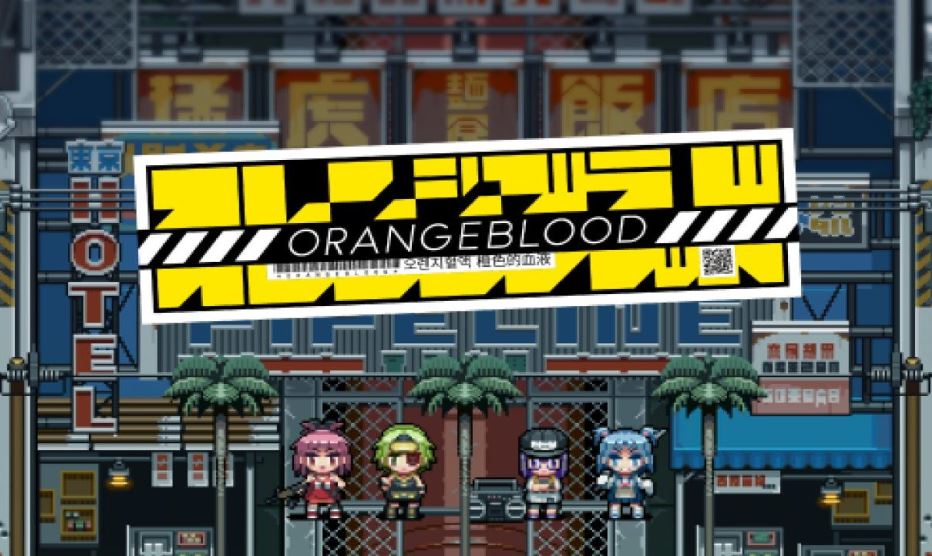
Shamploo Style
With youthful vigor, Orangeblood paints a vivid picture of a neon-lit dystopia where violence lurks around every corner and the stakes are just as grand as the plentiful egos around town. Most strikingly, the visual artwork immediately allures anybody, like myself, who fawns over the nostalgia of pixel graphics. One-upping the dystopian, glowing cyberpunk games like Disco Elysium, and upcoming ones like Cyperpunk: 2077 and Eastbound, Orangeblood pours on layer upon layer of neon colors drenched in static effects.
Although promising for the start of the experience, the further I ventured into Orangeblood, I found a lack of visual variety–the most of it coming from changing the saturation and contrast presets in the options menu. Really, I went from being mesmerized in a good way to being mesmerized in a bad way, as the pixel art stacks on top of itself with too many maze-like layers, and the color knobs turned all the way up to 11 distracted rather than enchanted after just the first few hours of play.
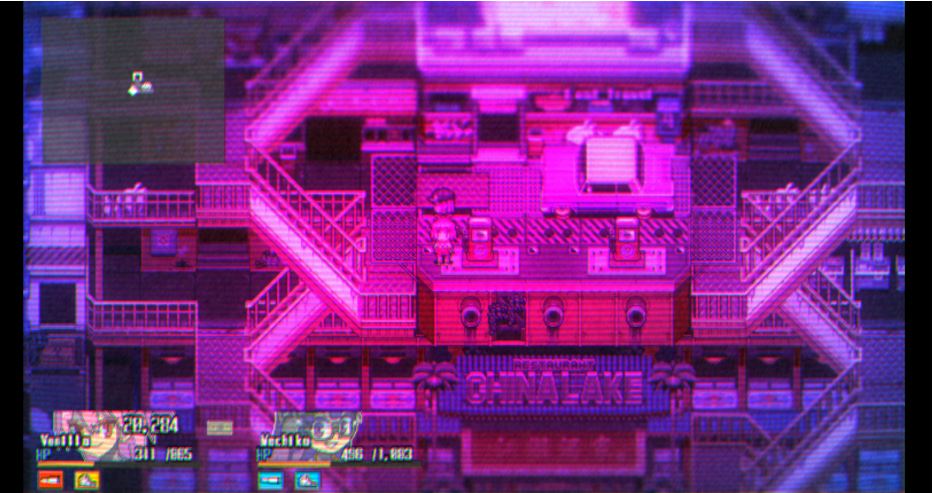
Despite the art not living up to my initial expectations, the music sure does make up for it. Stealing the show (really of the whole game) is the soundtrack. Mixed well, with great variety matching important emotional queues, the soundtrack and SFX helped set the gritty, hip-hop tone from the start and carried it throughout.
And on top of that, the writing is nothing if not gritty and hip-hop. To set the tone for the rest of the game–the very first encounter–is to shoot up a group of hippie rappers so that your friend can spit some fire bars in order to take over a gang hall. Hilarious? Yes. But does it work for the whole narrative experience? Ehhhh .,. kind of? Much like the artwork, I was initially enthralled with the writing, but the further I progressed the more I thought of the game as one-note.
The Grind
With many innovations working their way to the forefront through the worldbuilding and tone, the mechanics of the combat seemingly got lost along the way. Much like other JRPGs, the turn-based combat becomes monotonous with the best skills always being the best skills in every situation, the level progression grinding slowly, and the character’s skill trees becoming stale.
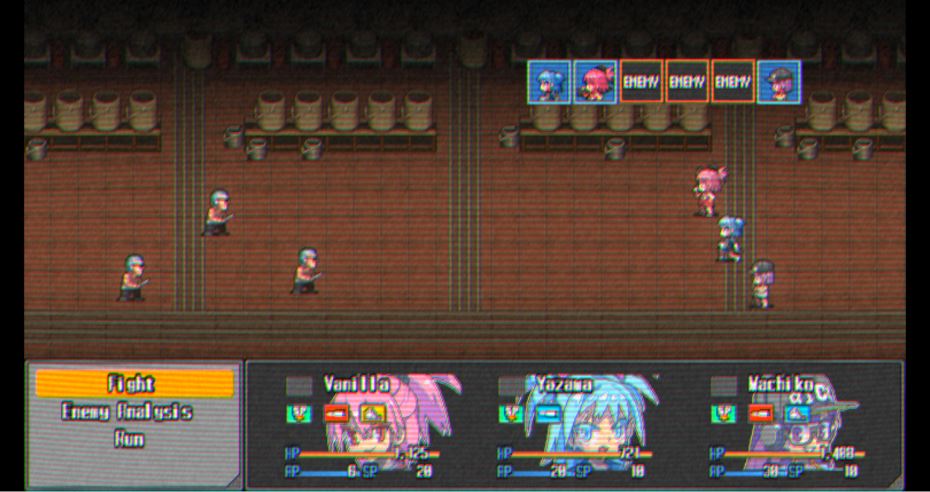
Clearly inspired by the looter-shooter genre the infinite amount of guns in the game is supposed to spark joy, wonder, and produce some game-breaking builds. However, none of those traits are present with the weapons and gear of Orangeblood. The game is quite easy (if you’re willing to spend the amount of time grinding it wants you to) and there is a general lack of customization past the surface level gun stats with no personality or compelling aesthetic to them.
In a genre that so desperately leans upon it, the variable aesthetics are simply not there. Every shotgun looks the same, lightning guns don’t zap, and the UI looks like unpolished work compared to the other aspects of the game. The experience firing a new gun is no longer visceral, it only satisfies on the surface level of numbers.
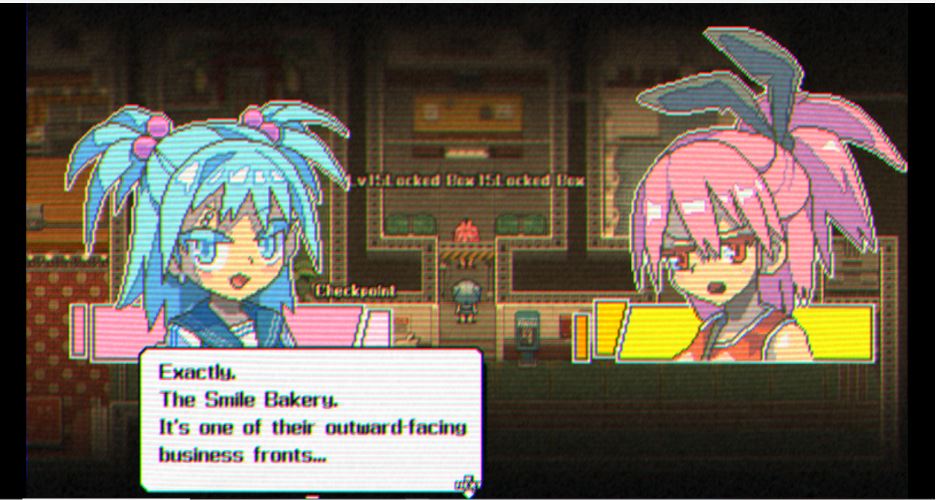
Final Verdict
In spite of the wacky indulgences, Orangeblood affords–sitting on random park benches smoking weed with badass friends, drinking 15 sodas to heal up the party’s cuts and bruises, and blasting through the city of New Koza with guns blazing–I can’t say I left this somewhat addictive game with great feelings. The artwork, writing, and combat all had diminishing returns, but at least its soundtrack and unique energy glued together an enjoyable experience.
Score: 7/10
Check Out the Orangeblood Trailer:
Orangeblood releases for Windows PC via Steam tomorrow, January 14, 2020. You can still wishlist the game today.
Steam Review
Recent Michigan State University grad and current Game Studies researcher who plays fantasy RPG's to escape, Smash to compete, and Stardew to chill. Also have a +1 to rage/toxicity resistance due to the many hours sunk into WoW, R6, and LoL.

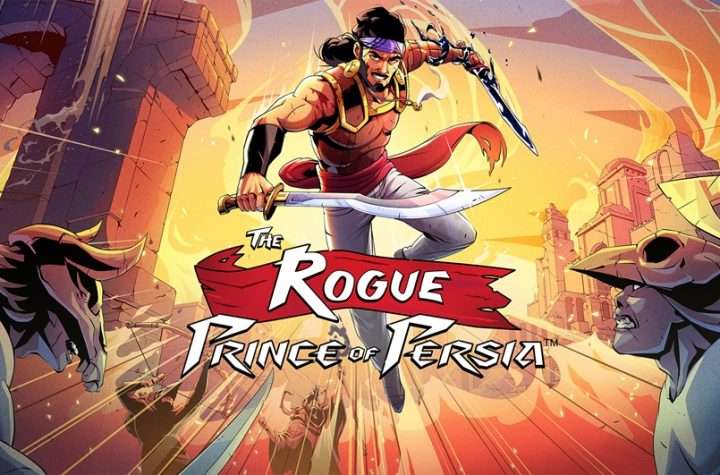
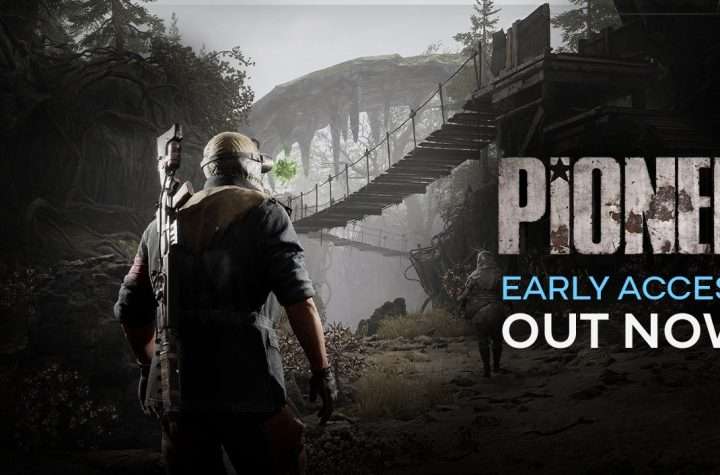
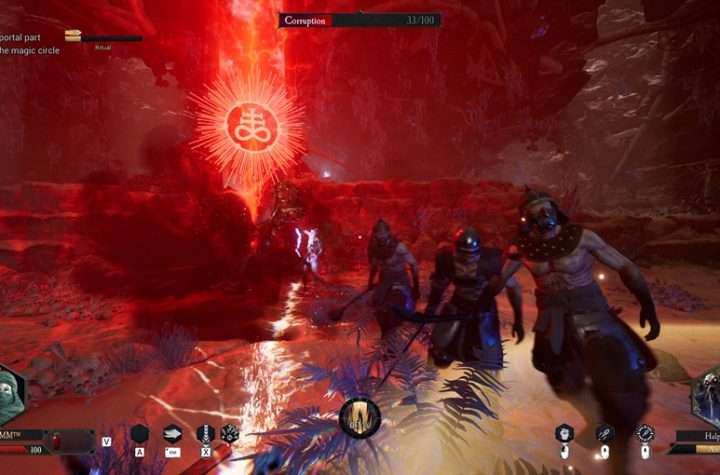
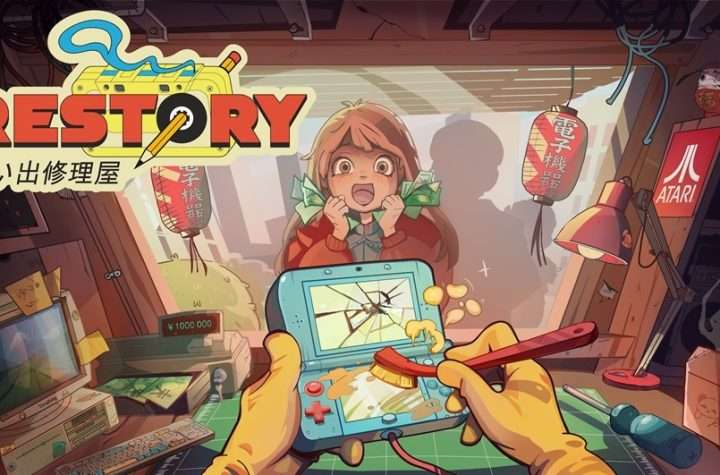
More Stories
Highly Anticipated Post-Apocalyptic MMO FPS, PIONER, Launches on Steam Early Access
DAIMON BLADES Preview for Steam Early Access
ReStory Preview for Steam